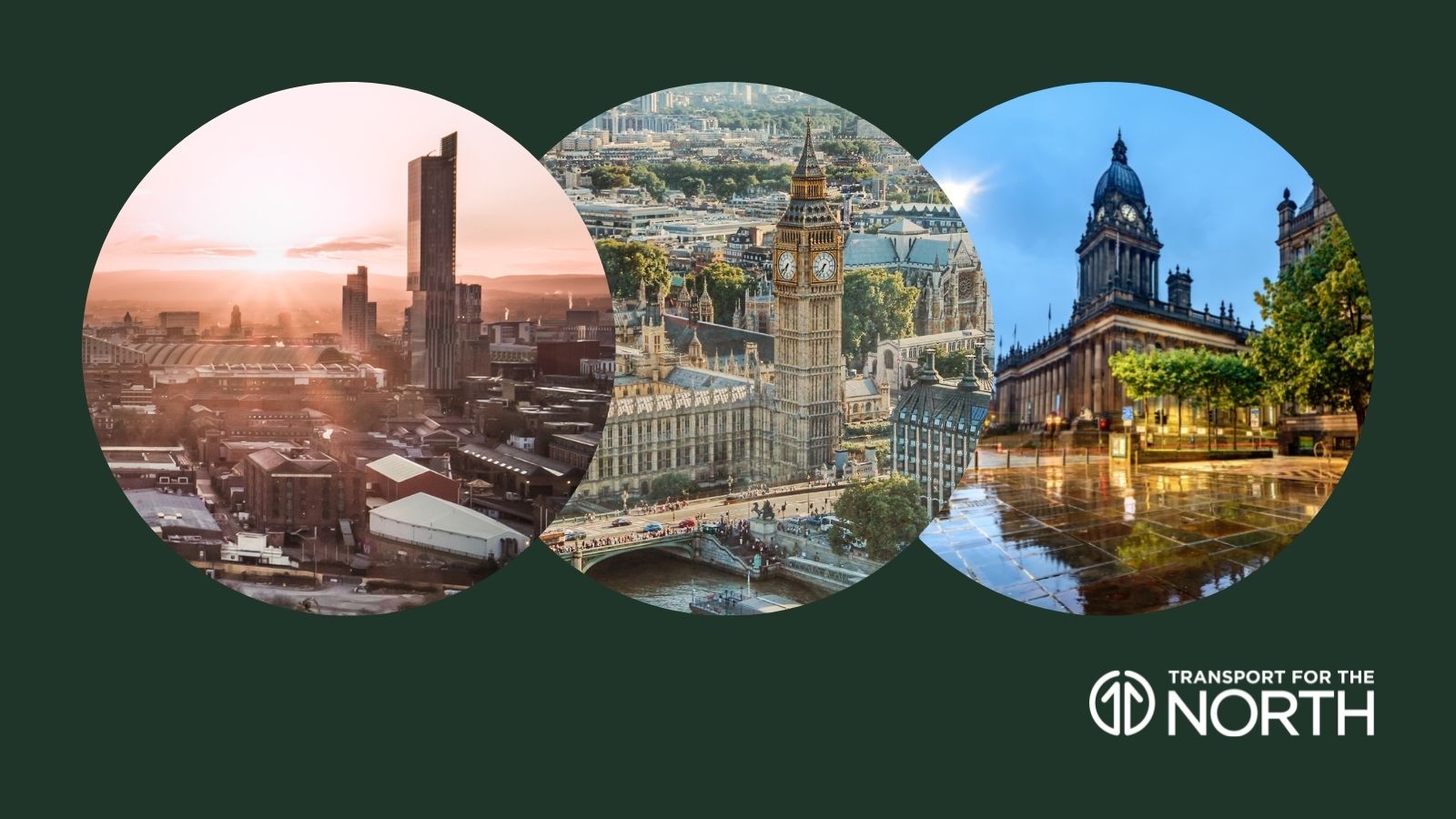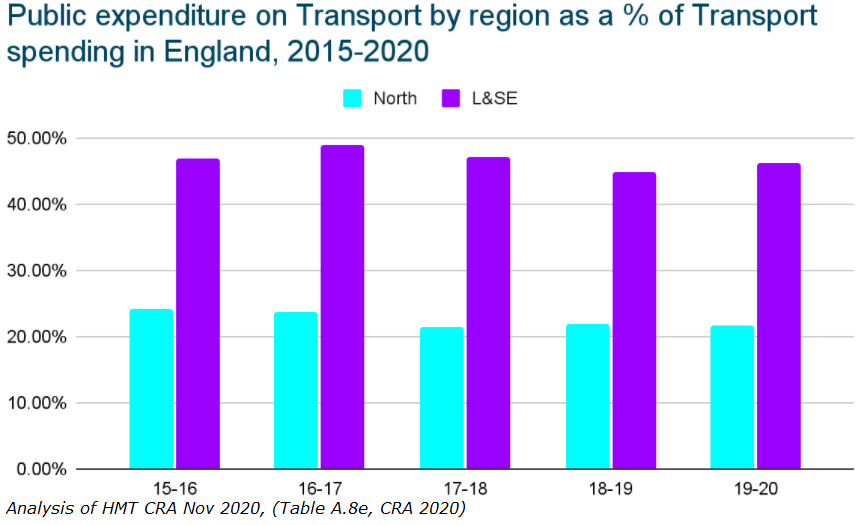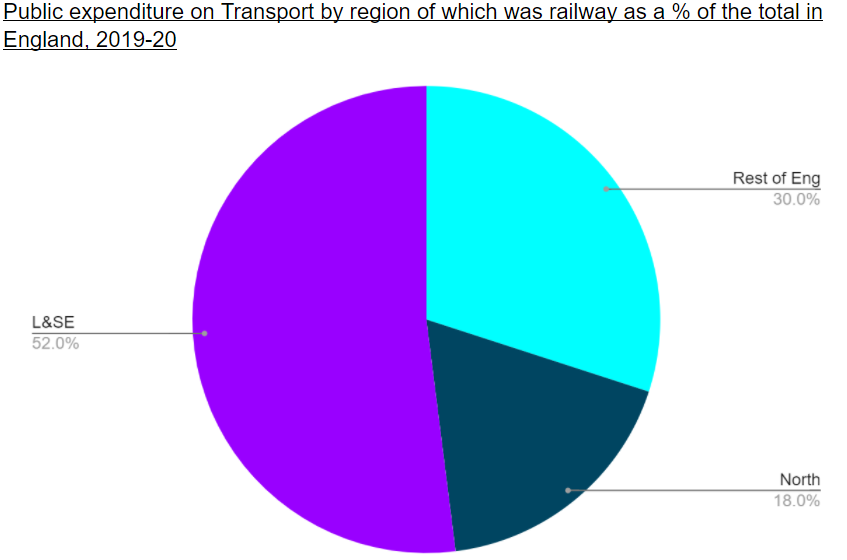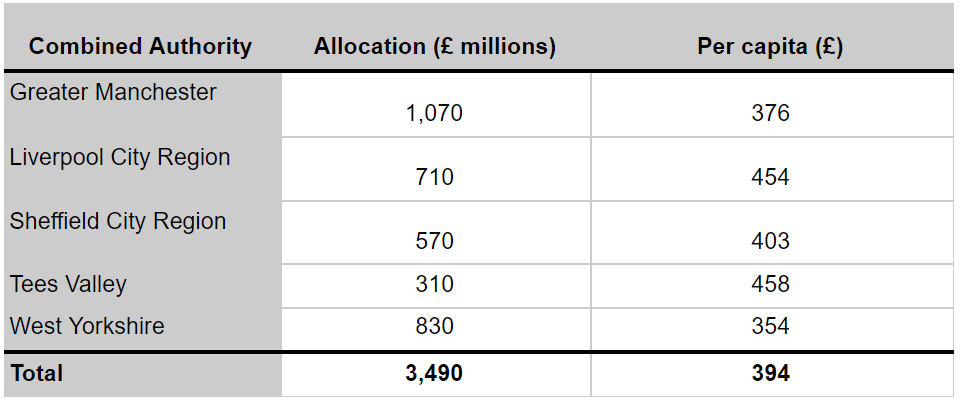The Comprehensive Spending Review (CSR) wasn’t expected to contain any headline announcements on major projects like Northern Powerhouse Rail (NPR). As the Chancellor said in an interview on Sunday 24 October, the Integrated Rail Plan (IRP) will “spell out the government’s plans to connect up all of the towns and cities […] in the North”. And this was something he repeated again today.
However, there is a lot the IRP is going to have to answer in regards to transport funding in the North, when it is released. The intra-city transport settlements announcement in the CSR today may give an idea of what we could expect, and hopefully it amounts to a step in the right direction.

The latest Treasury data shows that, between 2015-2020, there was £125bn of public expenditure spent on transport in England. Across the three regions of the North of England this totalled £28bn or 22%. If the regions of England received an equal per-capita spend on transport, then given that the North represents over 27% of England’s population, this can be seen to represent an underspend of around £6bn over the five years.
The Country and Regional Analysis data, published by HM Treasury, shows that the amount of public expenditure allocated to transport in England in 2019-20 was £27.5bn. The North of England received £5.9bn – a share of 21.7%. If we compare the 15 million people of the North with the 18 million population of London and the South East (L&SE), representing around a third of the English population, this reveals a sizeable gap. London and the South East (L&SE) received £12.6bn in public expenditure during this period, or 46.1% of transport spending.

When we break this down further and focus on public expenditure on transport specifically for the rail, this gap is even more pronounced. Of a total rail expenditure of £15bn in 2019-20, the North received £2.7bn or 18% of this spending; whereas, London and the South East saw £8.1bn or £52% – the lionshare of the investment.


It is worth noting that, according to the ORR, London and the South East are the regions that also have the largest amount of rail passenger usage. Nevertheless, the discrepancy in public expenditure between these two similar sized populations is considerable.
The announcement today of the intra-city transport settlements could be seen as a step in the right direction. Originally, the Chancellor announced £4.2bn at last year’s March Budget, and then allocated an initial £2.5bn at the Spending Review later that year in November, but Chancellor Rishi Sunak has now topped this up to £5.7bn this year following the submissions by the combined authorities. This, Mr Sunak claims, delivers to the regions across England a “London style” transport settlement.
The allocation of intra-city settlements in the North

When we break down the allocations that were announced, it is clear the North of England has done rather well, scooping over 60%, £3.4bn, of the £5.7bn funding allocated. Further, assuming the North of Tyne merges with Gateshead and South Tyneside to create a new combined authority and goes on to net the remaining £600m not yet allocated, then that would see over 70% of the funding going to the North.
Nevertheless, it’s not the CSR, but rather the publication “soon”, as the Chancellor said today (and expected next month), of the IRP, that will provide more definitive insight into whether we have turned a corner in the transport funding disparities in the country. However, the intra-city transport settlements, especially alongside the £1.2 billion in support for bus services, seems like a positive sign of encouragement, and a step in the right direction redrawing this imbalance.